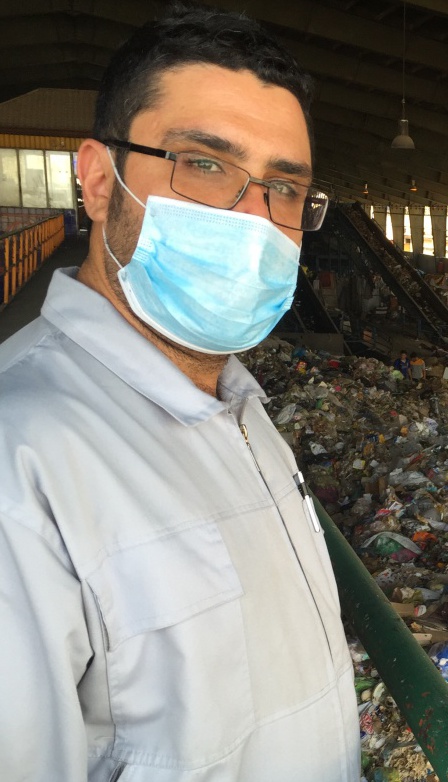
In common with many mega cities around the world, Tehran and its population of more than 9 million people is struggling with ever-growing waste generation. On a daily basis, more than 7000 tonnes of household waste is collected and brought to a huge facility in the desert south of the Iranian capital where most is either landfilled, composted or burnt for energy recovery. Multi-million Euro investments are required to boost its relatively small recycling rates.
Tehran has a serious air pollution problem. On most days, a thick brown-yellow smog masks the skyline, obliterating spectacular views of the towering Alborz mountains to the north of the city. On a positive note, the Iranian capital manages to keep its streets and neighbourhoods free of litter, as becomes clear while driving around this metropolis.
This is thanks in no small measure to the city’s effective waste collection infrastructure and to the Aradkouh waste processing centre positioned at its heart. The Aradkouh facility is located some 50 km south of Tehran and to the east of the international airport.
Exiting the city, you first pass one of Iran’s landmark structures – the immense mausoleum of the late Ayatollah Khomeini – before entering the dry and dusty desert. With an area covering roughly 16 km2, the Aradkouh complex has been handling most of Tehran’s residential waste for 40 years.
According to Mohammad Gholami, recycling expert and marketing manager of the Tehran Waste Management organisation, the city generates more than 7000 tonnes of household waste per day. ‘We have an average of 400 trucks every 24 hours, each truck carrying 20 tonnes of waste,’ he says.
Among the world’s biggest
The total volume is more than 10 000 tonnes if you take into account the residential suburbs around the city. Teheran counts as the ‘economic centre’ of the country and with a population of almost 9 million in the city and 16 million in the wider metropolitan area, it ranks as the third largest city in the Middle East.
This means that, in waste terms, Tehran is vying with mega cities such as Shanghai, Rio de Janeiro and Mexico City. The volumes arriving at Aradkouh are drawn from various smaller centres, including: those covering the 22 districts of the city of Tehran (roughly 6500 tonnes per day); hospitals as well as health and treatment centres (around 80 tonnes); and commerical enterprises (some 580 tonnes). Aradkouh has a workforce of 1200 people per 24 hours, including 400 truck drivers.
Weighing and separating
‘Nose and mouth mask on; you will need it,’ warns Gholami with a big smile while driving from the facility’s office building to the main sorting station. Protection is indeed no luxury; the…
This article has been published in magazine Recycling International issue November 2016
 Amir Seifizadeh Personal Website
Amir Seifizadeh Personal Website

